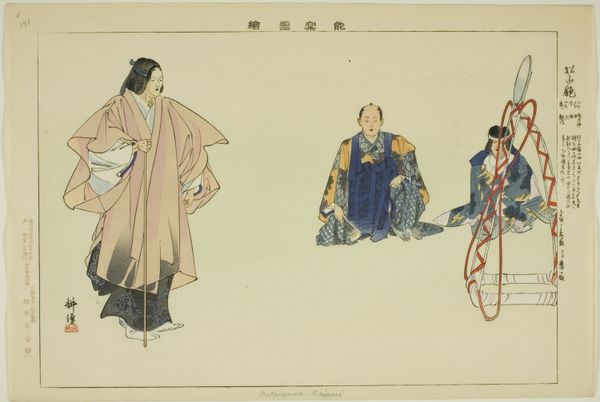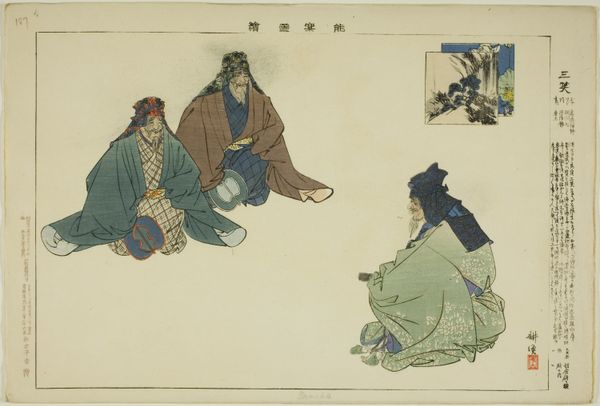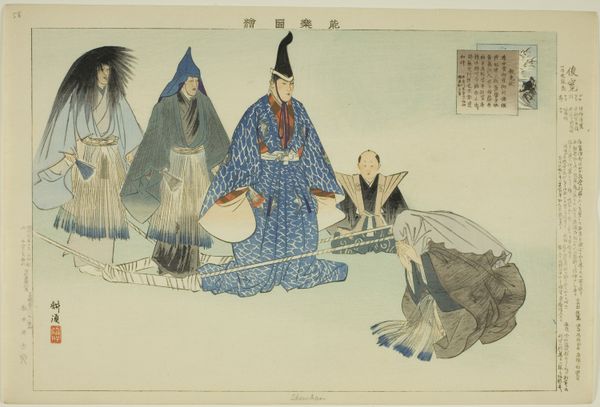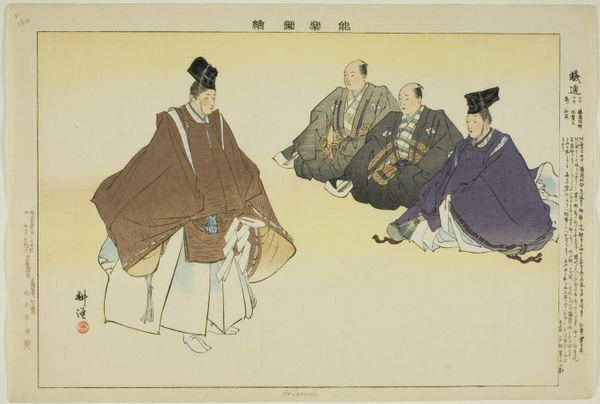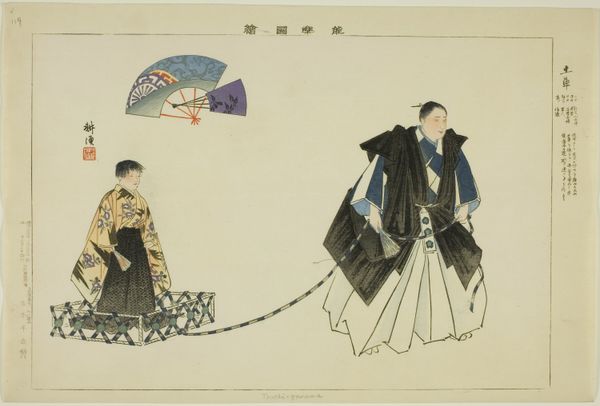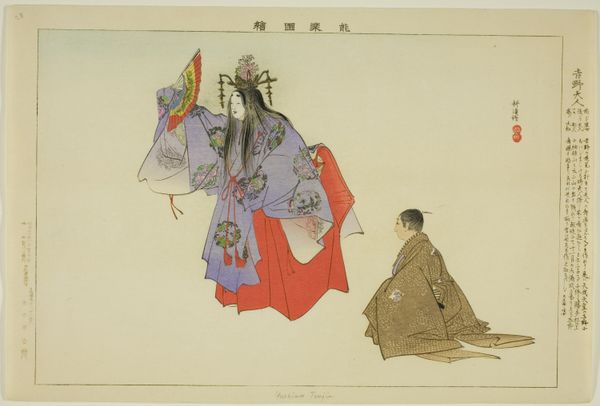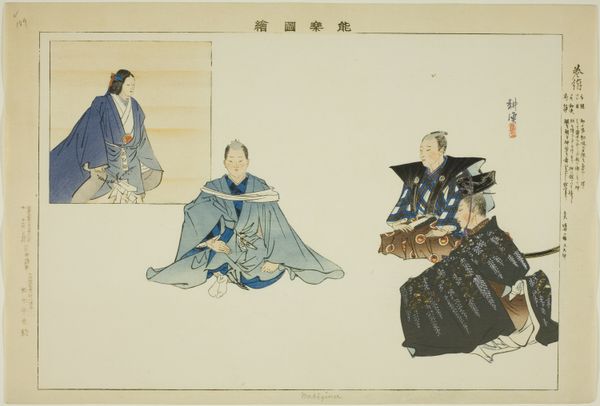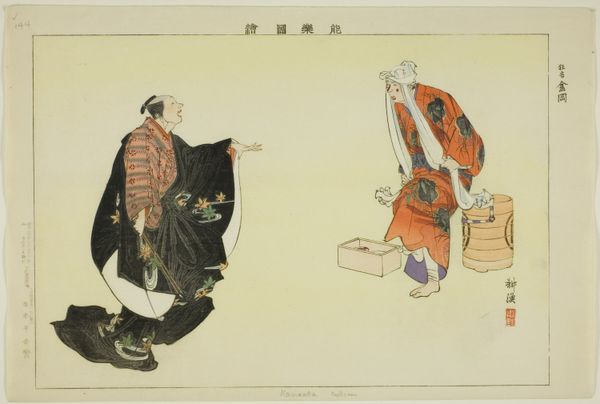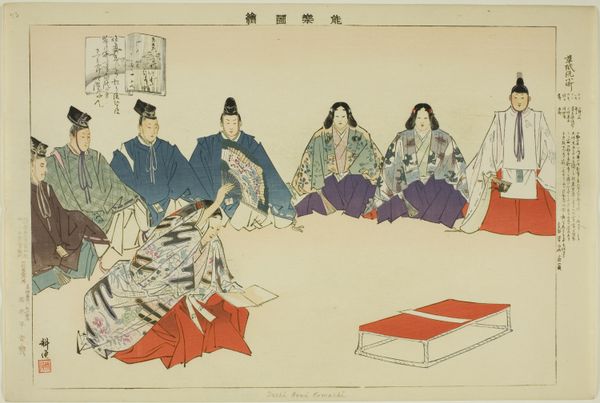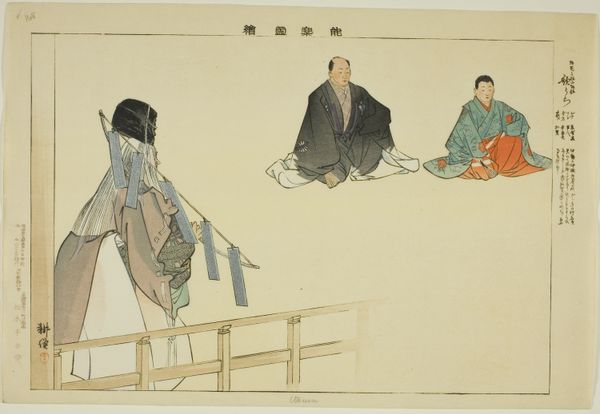
Sakuragawa, from the series "Pictures of No Performances (Nogaku Zue)" 1898
0:00
0:00
Dimensions: Approx. 25.2 × 37.4 cm (10 × 14 4/3 in.)
Copyright: Public Domain
Editor: This is "Sakuragawa, from the series 'Pictures of No Performances (Nogaku Zue)'", a print made by Tsukioka Kôgyo in 1898. There is an air of performance to the figures portrayed; the formal arrangement and use of colour evokes this feeling of structured artifice, particularly that small square with abstracted natural elements in the corner. What do you see in this piece, judged simply on its form? Curator: Focusing on the formal elements, the composition is particularly striking. Notice how the artist employs a limited color palette – primarily blues, reds, and blacks – creating a harmonious yet reserved visual experience. The lines are clean and precise, characteristic of Ukiyo-e prints, thus further dividing our understanding between surface and the portrayed performance of lived environments. This tension, perhaps, can serve to reinforce that what is presented to the viewer is precisely an engagement of performance rather than reality. Editor: I never considered the balance between figure and line quality so pointedly before. I've been reading that the lines give structure while also delineating various patterned fabrics! I wonder, should these fabric choices and their application in these spaces affect our understanding? Curator: Intriguing point. Yes, indeed, the patterns contribute to the aesthetic experience. Observe how they introduce controlled visual complexity within the larger pictorial structure. Do you see how each character becomes defined through this complex tapestry of interactions between line, pattern and colour? And, in relation to what we understand about the No theater, perhaps this then serves to reinforce a class hierarchy that is understood as the intended audience or observer. Editor: I can definitely appreciate those nuances and appreciate the effect this has in creating meaning. It seems this balance between graphic quality and implied socio-political structures produces meaning when considered as a singular, cohesive image! Curator: Precisely! It underscores how paying close attention to an artwork's visual components allows for understanding its meaning in broader contexts, while firmly remaining entrenched in formal reading. Editor: That really clarified a lot for me, approaching the piece from a formal point of view unlocked a new appreciation.
Comments
No comments
Be the first to comment and join the conversation on the ultimate creative platform.

